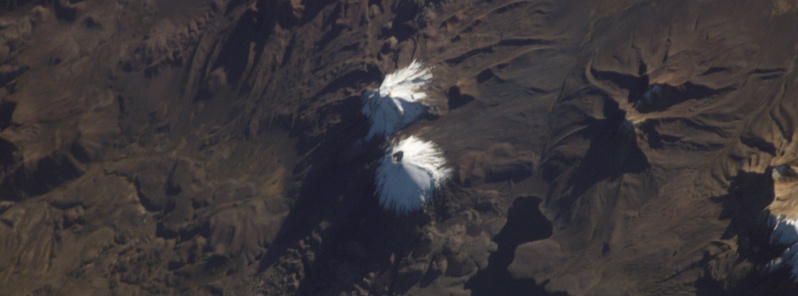Earthquake swarm detected under dormant Parinacota volcano, Chile-Bolivia

A seismic swarm has been detected under Parinacota stratovolcano along the Chile-Bolivia border on June 6, 2018, Sernageomin reports. There are no known historical eruptions of this volcano. However, Helium surface-exposure dates have been obtained for eruptions during the past 2 000 years.
The swarm started at 21:03 UTC and consisted of 90 VT (volcano-tectonic) earthquakes in 85 minutes.
The largest was ML2.3 located 6 km (3.7 miles) southwest of the crater at a depth of 10.6 km (6.6 miles).
The alert level remains at Green.
Volcán Parinacota is the southernmost and youngest of a pair of volcanoes forming the Nevados de Payachata group along the Chile-Bolivia border.
The symmetrical, 6336-m-high (20 787 feet) volcano forms a twin volcano with the dominantly Pleistocene, 6222-m-high (20 413 feet) Pomerape, which towers above a low saddle to the NE.
The collapse of Parinacota about 8 000 years ago produced a 6 km3 (1.4 mi3) debris avalanche that traveled 22 km (13.6 miles) W and blocked drainages, forming Lake Chungará.
Holocene eruptive activity has subsequently reconstructed the stratovolcano, which contains a pristine, 300-m-wide (984 feet) summit crater and youthful lava flows on the W flanks.
Although no historical eruptions are known, Helium surface-exposure dates have been obtained for eruptions during the past two thousand years both from the main cone and the Ajata group of satellite cones and lava flows on the S and SW flanks.
Featured image: Nevados de Payachata volcano group along the Chile-Bolivia border. Credit: NASA

Commenting rules and guidelines
We value the thoughts and opinions of our readers and welcome healthy discussions on our website. In order to maintain a respectful and positive community, we ask that all commenters follow these rules.